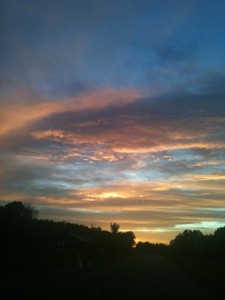Tag: summer’
Outdoor Science Lab
- by KitchenPantryScientist
It’s hard to believe it’s already August. Other than reading, we don’t do much to fight summer brain drain at our house, but the end of summer is a great time to head to the back yard or driveway for some science experiments. They’re so much fun that kids won’t even realize they’re using their noggins! Just click on the experiment for how-to directions, photos and videos.
Got water? Make siphons, a water-purifier, water rockets, or fire-proof water balloons.
Hungry? Build a solar oven from a pizza box and bake s’mores.
Stand on eggs or throw them as hard as you can without breaking them. You can always clean up mistakes with your hose!
Play magician with the tablecloth trick, or make paper bag volcanoes erupt in your back yard.
Of course, there’s always the famous Mentos geyser, and film canister rockets are always a hit.
Nature walk bracelets add fun to any excursion, and you can collect water from trees or make water filters with grass and sand.
August is a great time to find Monarch caterpillars or study the earthworms in your back yard.
And no summer would be complete at our house without an epic marshmallow shooting competition. You’ll even learn some physics!
TXT2012
- by KitchenPantryScientist
I spent an hour yesterday doing science with the girls at TXT2012 camp at Dakota County Technical College yesterday, where kids get to explore Technology, Science, Transportation, Health, Design, Technical/Industrial, and Business fields with hands-on projects. I showed them how to make a marshmallow slingshots (and talked about conservation of energy,) we talked about the fact that there are fun, safe experiments to do with kids you might be babysitting (with mom and dad’s permission, of course,) and then we played with red cabbage juice, and talked a little about pigments, flavenoids and anthocyanins. Finally, we did a hands-on chemical reaction using the cabbage juice, vinegar and baking soda.
Here are the experiments I demonstrated and mentioned: Marshmallow Slingshots, “Magic Potion” (Red Cabbage Juice chemical reaction,) Homemade Litumus Paper, CO2 breath test with red cabbage juice
and here are some fun, safe experiments for babysitters that can be done (under supervision) with young children: Tie-Dye Milk, Cornstarch Goo. If you have an iPhone or iPod Touch, these experiments are on the free (and Premium) version of KidScience app, so you can have them with you all the time.
KidScience app is on the App Store!
- by KitchenPantryScientist
I have to admit it. I’m ridiculously excited!
Our KidScience app is now available on the App Store, making it easy for kids of all ages to do science anywhere, any time, or to check out KidScience watch-and-do videos and learn a little science when they (or you) need a little portable screen time.
Let us know how you like it. It’s for you!

Here’s the scoop: If you’re ready to keep the kids busy this summer doing fun, educational projects without shopping trips and complicated directions, you’ll be as excited as we are that KidScience Premium, based on Kitchen Pantry Scientist science projects, has arrived.
Available for iphone, ipod touch and ipad, KidScience Premium brings entertainment and education to your fingertips with a continually updated list of experiments to choose from using things you already have on hand. It includes both photos and watch-and-do videos that make it easy for kids to do projects on their own or you can have fun doing projects together.
A free version of the KidScience app is on the way and will include all the same experiments and photos, but have limited free videos. I’ll let you know when it joins KidScience Premium on the App Store.
There are other kid science apps, but only one KidScience app! You’ll know us by our bright orange and blue logo.
Let’s do some science!
Kid’s Summer Science Activity: Cloud Observation for NASA
- by KitchenPantryScientist
Want to do a science project for NASA this summer? NASA scientists are very interested in learning more about how clouds affect Earth’s climate and you can help them collect data!

Although satellites can look down on the earth and study cloud cover, it can be difficult for them to distinguish clouds from other white surfaces, including snow and ice. Using your eyes, you can observe the clouds over your head within 15 minutes of the time a NASA satellite passes over to confirm what it sees from space.
Learn what’s involved and how to register on NASA’s S’COOL Roving Observation website. Or, if you’re an educator or homeschooler who wants to collect data from the same location each time, you can go to the CERES S’COOL Project website. I know we’re going to sign up!
On another note, our tadpoles are growing legs. We’ll have to put them in a taller container soon so I don’t come down some morning to find frogs hopping around our kitchen.
